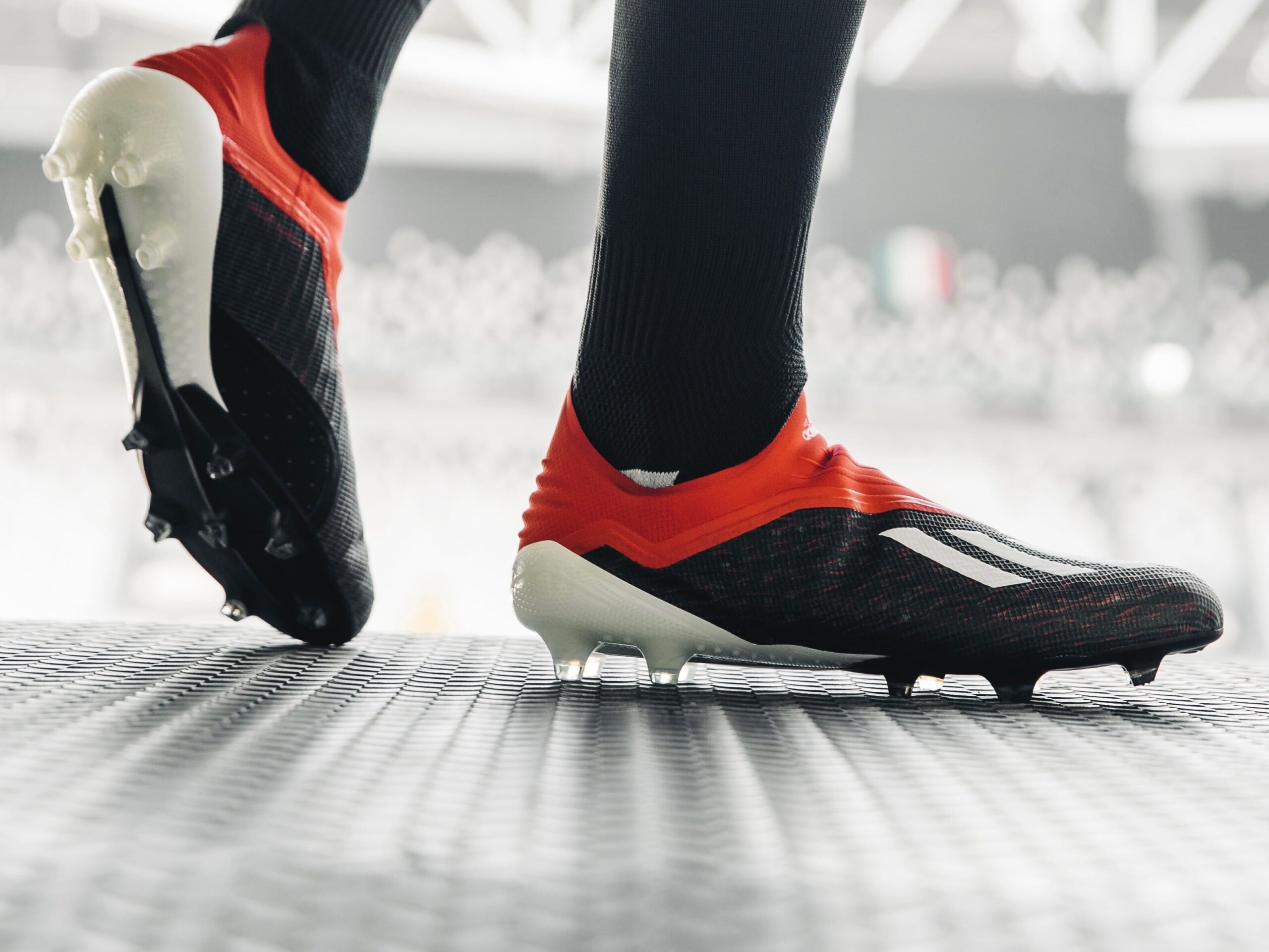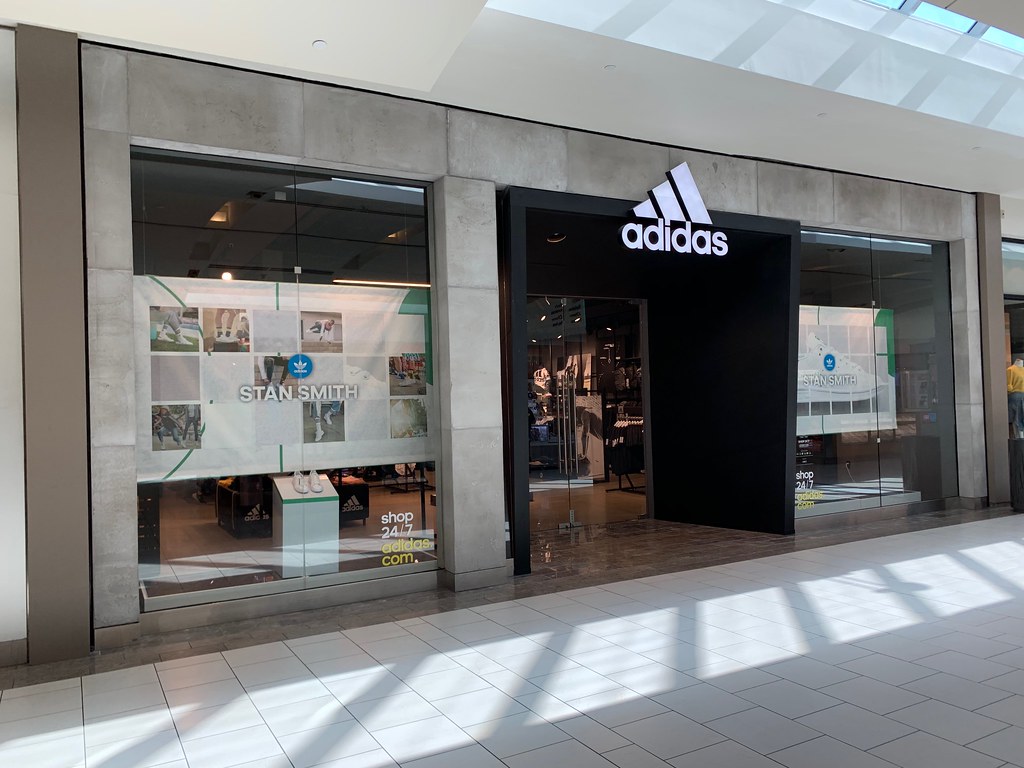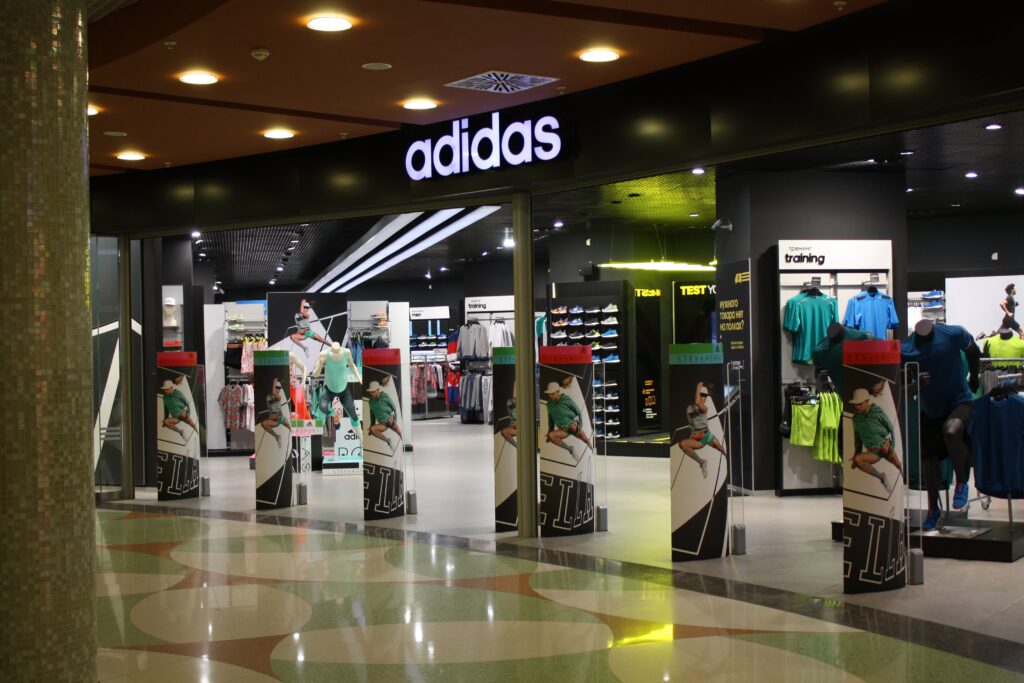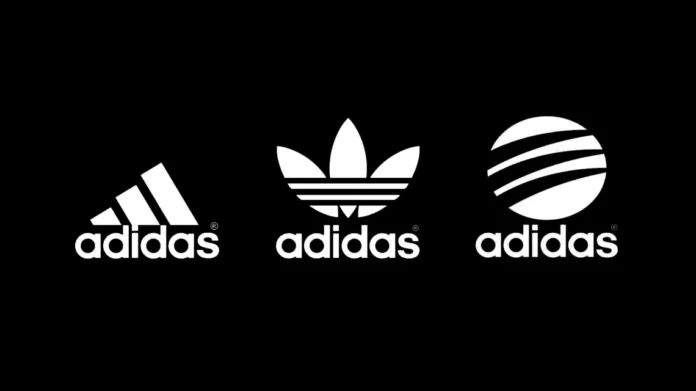Everyone is probably familiar with Adidas, in fact, you probably own a pair or two of their shoes, since Adidas is one of the most recognizable and successful brands in the world of sports, fashion, and footwear.
From its humble beginnings in Germany in the 1920s, Adidas is a brand that has become synonymous with excellence in sports and fashion. The company has achieved global recognition and success by utilizing a range of marketing strategies that have helped to build its brand reputation and reach a wider audience.
Adidas: A Brief History
Adidas is a German multinational corporation that designs and manufactures athletic and fashion footwear, apparel, and accessories. It was founded by Adolf Dassler in Herzogenaurach, Germany in 1949, after a split with his brother Rudolf Dassler, who went on to found Puma.
Adidas became a household name in the 1950s, when it provided the shoes for the German national football team, which went on to win the 1954 FIFA World Cup.
Adidas Group then went on to acquire multiple brands like Rebook and Salomon which helped to diversify their product offerings. and now Adidas Group is valued at $34B.
Adidas was able to achieve this growth by using smart marketing tactics and strategies that made them what they are today.
1. Sponsorships

Adidas has a long history of sponsoring sports events, teams, and athletes, which has helped to build its brand reputation and reach a wider audience. For example, Adidas was the official sponsor of the 2018 FIFA World Cup, Adidas has also sponsored high-profile athletes like Lionel Messi, who has been an Adidas ambassador since 2006
Adidas’ sponsoring Jesse Owens is one of the most iconic examples of the brand’s involvement with sports and athletes. Jesse Owens was an African-American track and field athlete who competed in the 1936 Summer Olympics in Berlin, Germany. At the time, Adolf Dassler, the founder of Adidas, was looking for ways to promote his brand and saw an opportunity to sponsor Owens.
Adidas provided Owens with a specially designed pair of shoes for the Olympics, which were lighter and more comfortable than the shoes he had been using. Owens went on to win four gold medals in the 100 meters, 200 meters, 4×100-meter relay, and long jump events, setting new Olympic and world records in the process.
The success of Owens at the 1936 Olympics helped to establish Adidas as a leading sports brand, and the company continued to sponsor many high-profile athletes in the years that followed.
2. Product Innovation

Adidas is known for its product innovation, which has helped the company to stay ahead of the competition and meet the evolving needs of customers. One of the most notable innovations is Boost cushioning technology, introduced in 2013. This technology uses a unique material called TPU (thermoplastic polyurethane) to create tiny energy capsules that provide responsive and comfortable cushioning for running shoes.
Another innovation is Primeknit technology, which uses a seamless, knitted upper material that provides a customized and comfortable fit for shoes. This technology allows for more precise and personalized shoe design and has been used in a range of Adidas products, including running shoes, football boots, and lifestyle sneakers.
Adidas has also been at the forefront of sustainable innovation, partnering with Parley for the Oceans to create products made from recycled ocean plastic waste. The company has also used 3D printing technology to create personalized and precise shoe designs, as seen in the Futurecraft 4D shoe.
Adidas’ product innovations have helped to establish the brand as a leader in the sports and fashion industries, and have enabled the company to meet the ever-changing needs of customers. By pushing the boundaries of design and technology, Adidas has remained ahead of the competition and maintained its position as one of the most innovative and respected brands in the world.
3. Strong Retail Presence

Adidas retail stores are located in major cities around the world, and the company has a strong presence in Europe, North America, and Asia. The stores offer a wide selection of products, including the latest footwear releases, sportswear, and accessories. The stores are designed to showcase the brand’s products and offer customers a unique shopping experience.
In addition to its own retail stores, Adidas also partners with other retailers to sell its products. The brand has partnerships with major retailers such as Foot Locker, JD Sports, and Dick’s Sporting Goods, among others. These partnerships help Adidas reach a wider customer base and increase its retail presence.
A strong retail presence leads to a wider range of distribution of their products, as well as brand awareness.
4. Social Media Presence
Adidas has a strong social media presence across various platforms. The brand uses social media to connect with its audience, share its products and campaigns, and engage with its customers.
On Instagram, Adidas has more than 38 million followers as of 2021. The brand’s Instagram feed features high-quality images and videos of its products, as well as sponsored posts featuring athletes and celebrities. Adidas also uses Instagram to showcase its brand values, such as sustainability and diversity, by sharing content related to these topics.
On Twitter, Adidas has more than 3 million followers. The brand uses Twitter to share real-time updates about its products, events, and campaigns. Adidas also uses Twitter to engage with its customers by responding to their queries and feedback.
On Facebook, Adidas has more than 37 million followers. The brand uses Facebook to share its products and campaigns, as well as content related to fitness and sports. Adidas also uses Facebook to run contests and giveaways, which helps to engage its audience.
Adidas also has a strong presence on YouTube, where it has more than 2 million subscribers. The brand uses YouTube to share high-quality videos featuring its products, athletes, and campaigns. Adidas also uses YouTube to showcase its brand values, such as sustainability and diversity, by sharing content related to these topics.
5. Celebrity Endorsements
Adidas has a long history of collaborating with celebrities and athletes to endorse its products. The brand has worked with some of the biggest names in sports, entertainment, and fashion, including Kanye West, Beyoncé, David Beckham, and Lionel Messi.
One of Adidas’ most successful celebrity collaborations is with Kanye West, who launched his Yeezy line with the brand in 2015. The Yeezy line has since become a highly sought-after collection of sneakers and clothing, and has helped to solidify Adidas’ position in the fashion world.
Adidas has also worked with Beyoncé, who launched her Ivy Park collection with the brand in 2016. The Ivy Park line features a range of athletic wear and sneakers, and has been successful in capturing the attention of both fashion and fitness audiences.
In the world of sports, Adidas has worked with some of the biggest names in soccer, basketball, and running. The brand has endorsement deals with soccer stars like Lionel Messi, Paul Pogba, and Mohamed Salah, as well as basketball players like James Harden and Damian Lillard.
Adidas has also worked with runners like Kathrine Switzer, the first woman to run the Boston Marathon, and Mary Keitany, a multiple-time champion of the New York City Marathon.
Overall, Adidas’ celebrity endorsements have helped the brand build a strong reputation in the world of sports and fashion. By collaborating with high-profile celebrities and athletes, Adidas has been able to create buzz around its products and reach new audiences.
6. Designer Collaborations
Adidas has a long history of collaborating with designers to create unique and innovative products. The brand has worked with some of the most respected designers in the fashion industry, including Yohji Yamamoto, Raf Simons, and Stella McCartney.
One of Adidas’ most successful designer collaborations is with Yohji Yamamoto, who launched his Y-3 line with the brand in 2003. The Y-3 line features a range of sneakers and clothing that combines Yamamoto’s avant-garde design aesthetic with Adidas’ technical expertise. The collaboration has been highly successful and has helped to establish Adidas as a leader in the world of high-end athletic wear.
Adidas has also worked with Raf Simons, a Belgian designer known for his minimalist aesthetic. The collaboration has resulted in a range of sneakers and clothing that combine Simons’ clean design with Adidas’ technical expertise. The collaboration has been highly successful and has helped to establish Adidas as a leader in the fashion world.
In addition to these collaborations, Adidas has also worked with Stella McCartney to create a line of sustainable athletic wear. The collaboration has resulted in a range of products that are made from sustainable materials and feature McCartney’s signature design aesthetic.
Overall, Adidas’ designer collaborations have helped the brand to push the boundaries of athletic wear and establish itself as a leader in the fashion industry. By working with respected designers, Adidas has been able to create unique and innovative products that appeal to a wide range of customers.
7. Emotional Branding

Adidas is known for its emotional branding approach, which focuses on creating a connection between consumers and the brand through emotions, values, and experiences. Emotional branding is a marketing strategy that aims to create an emotional bond between the brand and its customers, rather than just promoting the product’s features or benefits.
Adidas’ emotional branding is centered around values such as passion, authenticity, and innovation. The company’s marketing campaigns often feature inspiring stories of athletes who have overcome challenges to achieve their dreams, which helps to create an emotional connection with consumers who share similar aspirations.
For example, Adidas’ “Impossible is Nothing” campaign, launched in 2004, featured inspiring stories of athletes such as Muhammad Ali and David Beckham, who overcame adversity to achieve success. The campaign was highly successful and helped to position Adidas as a brand that supports and celebrates the achievements of athletes.
Another example of Adidas’ emotional branding is its partnership with Parley for the Oceans, a non-profit organization that raises awareness about ocean pollution. Adidas has created a line of products made from recycled ocean plastics, which helps to promote sustainability and environmental responsibility. By aligning itself with a cause that resonates with its target audience, Adidas is able to create an emotional connection with consumers who are passionate about environmental issues.
8. Brand Partnerships
Adidas has partnered with other brands to build its brand reputation and differentiate itself from competitors. For example, Adidas has partnered with Porsche Design to launch a range of high-end sportswear products, and with the National Football League (NFL) to create performance apparel for players and fans.
The Adidas Porsche Design Sport collection is designed for men and women who appreciate both style and function. The collection includes sneakers, running shoes, and training shoes that feature innovative materials and technologies, such as BOOST and BOUNCE cushioning, to provide exceptional comfort and support.
In addition to footwear, the collection also includes a range of apparel and accessories, such as jackets, pants, shorts, and bags, that are designed to enhance performance and style. The collection features sleek and modern designs that incorporate Porsche’s signature minimalist aesthetic and Adidas’ cutting-edge sports technology.
One of the most popular products from the Adidas Porsche Design Sport collection is the Porsche Design Sport Bounce S4 style. This sneaker features a high-tech, futuristic design that includes a unique suspension system that provides a comfortable and responsive ride. The sneaker is made from high-quality materials, such as carbon fiber and Kevlar, which make it both durable and lightweight.
9. Multiple Sales Channels

Adidas has developed a multi-channel sales strategy to ensure that their products are widely available to customers. They have their own retail stores, including flagship stores in major cities around the world, that offer a wide range of Adidas products, including footwear, apparel, and accessories. Customers can also buy Adidas products through their e-commerce platform, which offers the convenience of online shopping, including free shipping and easy returns.
Adidas also sells their products to third-party retailers, such as department stores, sporting goods stores, and specialty retailers, which helps increase brand awareness and reach customers who may not shop at their own retail stores. Additionally, Adidas collaborates with other brands and designers to create limited edition collections that are sold through select retailers, which creates excitement and buzz around their products and helps reach new audiences.
Finally, Adidas operates outlet stores that offer discounted products that may be from previous seasons or overstocked items. This allows them to reach price-sensitive customers and clear out inventory. This multi-channel approach has helped Adidas stay competitive in the sports and fitness market, and provide a seamless shopping experience for their customers.
10. Experiential Marketing
Adidas uses experiential marketing to create engaging and immersive experiences for its customers. They create pop-up stores in various locations, organize events like the Adidas City Runs, and create interactive installations like the one at the 2021 Australian Open.
Through experiential marketing, Adidas is able to create a unique and memorable experience for its customers that goes beyond traditional advertising. These experiences help to build brand loyalty and create a positive association with the Adidas brand, which can lead to increased sales and customer engagement.
Conclusion
In conclusion, Adidas has developed a variety of effective marketing strategies that have helped them establish a strong presence in the sports and fitness industry. From influencer marketing to experiential marketing and personalization, Adidas has utilized a multi-faceted approach to connect with its customers and drive engagement.


